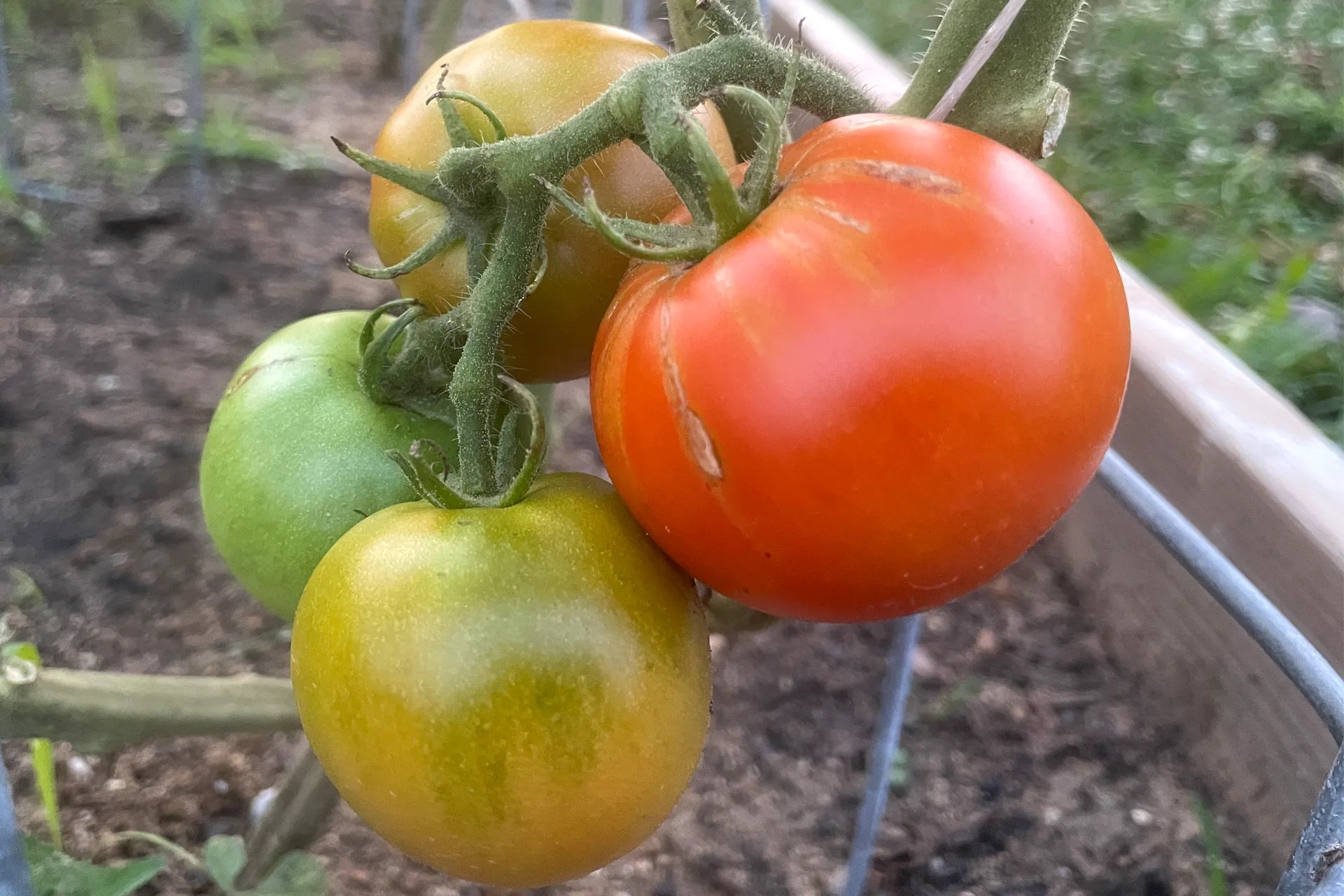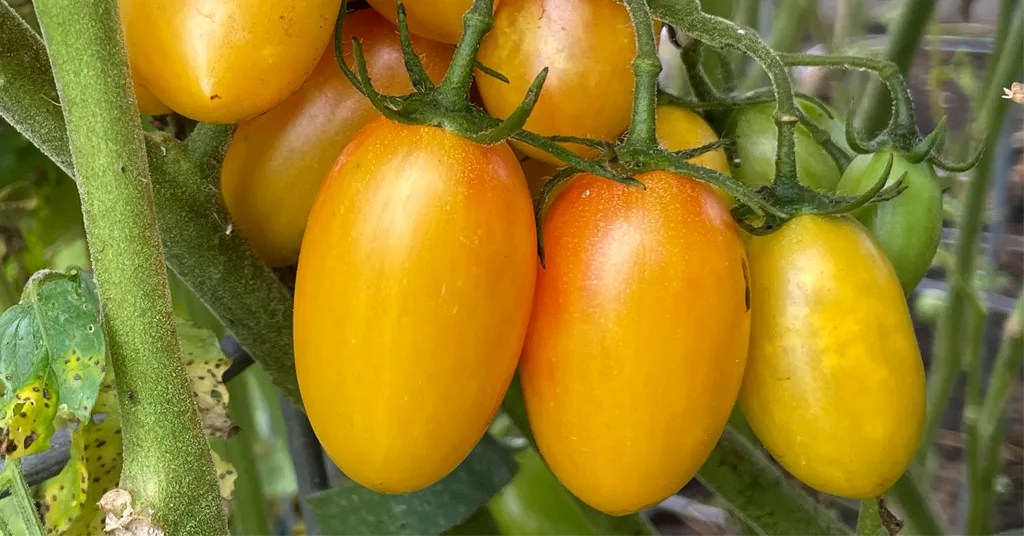This post may contain affiliate radio link . When you buy through links on my site , I may earn a commission at no cost to you . See myPrivacy Policyfor item .
comrade plants for Lycopersicon esculentum are a bang-up agency to enhance your garden ’s health and productivity . By cautiously pick out flora that complement and supporttomato growth , you may improve stain calibre , deter pests , and increase yields . We will cover the benefits of companion planting for tomatoes , the best companion plants to consider , and how to effectively plant and wish for them .
mesa of Contents

Benefits of Companion Planting
Companion planting is a gardening proficiency where different plant are spring up together to benefit each other in various ways , such as pest ascendance , pollination , and nutrient uptake . fellow planting offers several vantage for Lycopersicon esculentum plants :
Improving Tomato Health
sure companion plants , such as marigold and basil , release born compound that can ameliorate the overall health of tomato plants . These plants may help oneself deter plague and repress the risk of diseases , result in healthier tomatoes .
Pest Control
Companion plants like nasturtiums and tailwort can attract good worm , such as lady beetle and parasitic wasps , which predate on common tomato pests likeaphidsandhornworms . This natural form of pest control can reduce the need for chemical pesticides .
Attracting Beneficial Insects
In addition to control pests , some companion plantsattract pollinatorslike bees and butterfly , which are all-important for tomato plants to produce fruit . Plants like marigolds and borage can aid increase pollination rates and fruit exercise set .
Maximizing Garden Space
fellow traveler planting allows you to make the most of your garden blank space by interplanting compatible crops . For example , you could plantlettuceoronionsbetween tomato plant plants to utilize the place between rows more efficiently .
Best Companion Plants for Tomatoes
When selecting fellow traveller plants for tomatoes , study the following alternative :
1. Basil(Ocimum basilicum)
Basilis a popular fellow traveler plant for tomatoes , as it can better the flavor of tomatoes when grow together . Additionally , Basil the Great may help gross out pests like mosquitoes and flies . Basil is easy to grow and adds a wonderful aroma to your garden .
2. Marigolds(Tagetes spp.)
Marigolds are known for their power to repel nematode in the soil , which can be harmful to tomato plant plants . Marigolds also attract beneficial insect like ladybugs and lacewing fly , which prey on love apple pests . Planting marigolds around tomato plants can aid protect them from these stain - borne pest .
3. Nasturtiums(Tropaeolum majus)
nasturtium are attractive flowers that can pull in beneficial insects to the garden . They also have a peppery taste sensation that can dissuade pests likeaphids , whiteflies , and crush bug from attacking Lycopersicon esculentum plants . Nasturtiums also pull in predatory insect that feed on tomato pests .
4. Borage(Borago officinalis)
Borage is an excellent companion plant for tomatoes for several understanding . Firstly , borage is known to improve the flavor of Lycopersicon esculentum when produce together . The plant has beautiful blue flowers that appeal pollinator like bee , which can help increase tomato yields through good pollination . Borage is a natural pest repellent , peculiarly againsttomato hornworms . The plant contains compounds that repel these pests , help to protect your tomato plants from damage . Borage is also a good plant for the grunge , as it can pile up K , which is an essential nutrient for love apple .
5. Carrots(Daucus carota)
Carrots are a upright fellow traveller plant for Lycopersicon esculentum , as they have a shallow ascendent system that wo n’t compete with tomato roots . carrot aid break up the soil around tomato roots , allowing for better water and nutrient uptake . In return , Lycopersicon esculentum plant life provide some shade for carrot , aid them thrive in hot weather . Planting carrots between tomato industrial plant can help maximize garden space .
6. Onions (Allium cepa)
Onionsare a good companion for tomato as they dissuade pest likeaphids , spider mites , andcabbage worms . Planting onions around your Lycopersicon esculentum plants can help keep these pests at bay . Plus , onions are a versatile vegetable that you’re able to harvest alongside your tomatoes .
7. Asparagus(Asparagus officinalis)
Asparagus can help improve territory quality and structure when embed near tomato . The deep root of edible asparagus plant life can break up hard territory and improve drainage . Additionally , edible asparagus plants are not heavy feeders , so they wo n’t compete too much with tomatoes for nutrient . plant asparagus near tomato can also help deter pestilence like nematode worm , which can be harmful to tomato plants .
8. Lettuce(Lactuca sativa)
Lettuceis a tight - growing crop that can be planted between tomato plants to utilize garden space more efficiently . Lettuce also has shallow theme that wo n’t step in with tomato plant roots or vie for nutrients .
9. Garlic(Allium sativum)
standardised to onions , garlicis a great companion flora for Lycopersicon esculentum . It repelsaphids , wanderer mites , and other pest that can harm tomato plants . Plus , Allium sativum is a flavourful addition to many dishful , making it a utile and tasty companion for tomatoes .
How to Plant Companion Plants
When planting companion plants for tomatoes , take the following tips :
Companion Plants for Tomato Pests
To control pests by nature , consider the be associate plants :
Natural Pest Control
Plants like dill , parsley , and Chinese parsley can appeal good louse that feed on common tomato pests , such asaphidsand caterpillars .
Deterrent Plants
Plants like ail , onion plant , and chives emit strong odors that can repel pests from the tomato plant plants . establish these deterrent plant around tomatoes can aid protect them from pesterer harm .
Trap Crops
Some flora , like mustard greens and radishes , can act as maw crops by attracting pestilence away from tomato plants . Once the pests are draw to the lying in wait crop , they can be easily polish off or treated .
Companion Plants for Tomato Diseases
To prevent and manage diseases , consider the following companion works :
Disease-Resistant Varieties
Planting disease - resistant variety of Lycopersicon esculentum can help repress the danger of common tomato plant diseases , such as blight and wilt disease .
Beneficial Fungi
plant like beans and peas can host beneficial fungus kingdom that can help protect tomato plant from soil - borne disease . Interplanting these crop with tomatoes can improve overall plant health .
Preventative Measures
right spacing , adequate sunlight , and good aura circulation around tomato plant plants can help reduce the risk of disease . Avoiding overhead lacrimation and dispatch infected plants promptly can also aid prevent the spread of disease .
Companion planting is a practice that can benefit your tomato garden in many mode . By opt the correct companion plants and plant them strategically , you could improve soil health , dominance pestis naturally , and increase yield . experimentation with different comrade plant to see which ones work best in your garden , and enjoy a more productive and various garden ecosystem .

Can you spot the Tomato Hornworm?

Can you spot the Tomato Hornworm?


Carrots


Dill Plant